It probably comes as no surprise to you that a tradition of rag rugging can be found all across the world. For hundreds of years, different cultures have used their local materials and creativity to make distinctive rug designs, ranging from the the jewell-coloured Chindi rugs of India, to the more muted finely-woven rag rugs of Scandinavia.
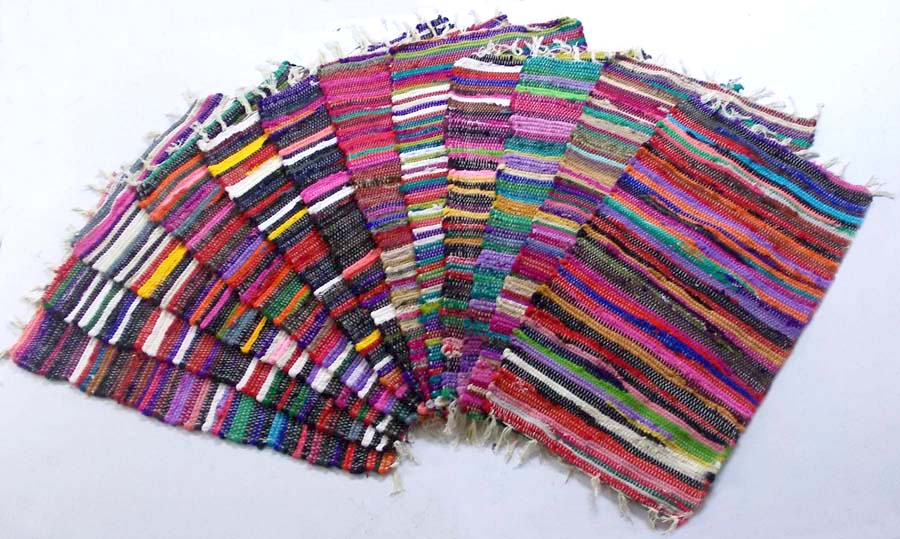
Chindi rag rugs from India 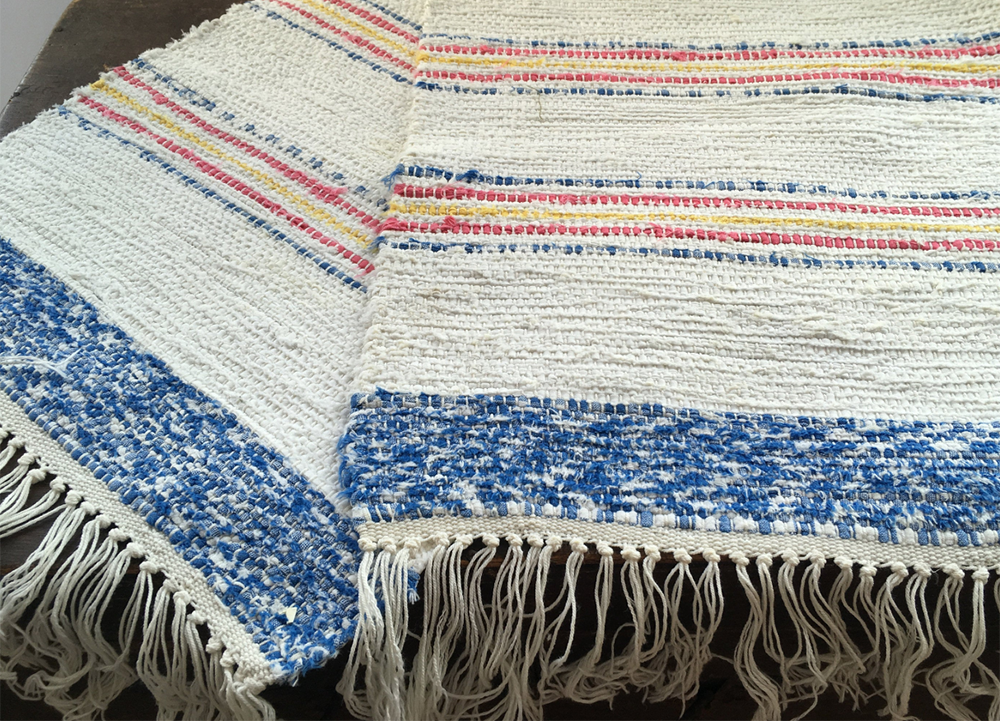
A Scandinavian rag rug
One country that has a truly rich history of rug-making is Morocco and it’s this heritage that inspired us to make a Berber-style rag rug for Issue 103 of Mollie Makes Magazine back in March of last year. In fact, we were so chuffed with how it turned out that we’ve since made a larger version using the short shaggy method of rag rugging and our Ragged Life XL Hessian, which is a whopping 200 x 140cm. Below is how it turned out… As you can tell from our legs, it’s a beast!



It is sooo heavy!
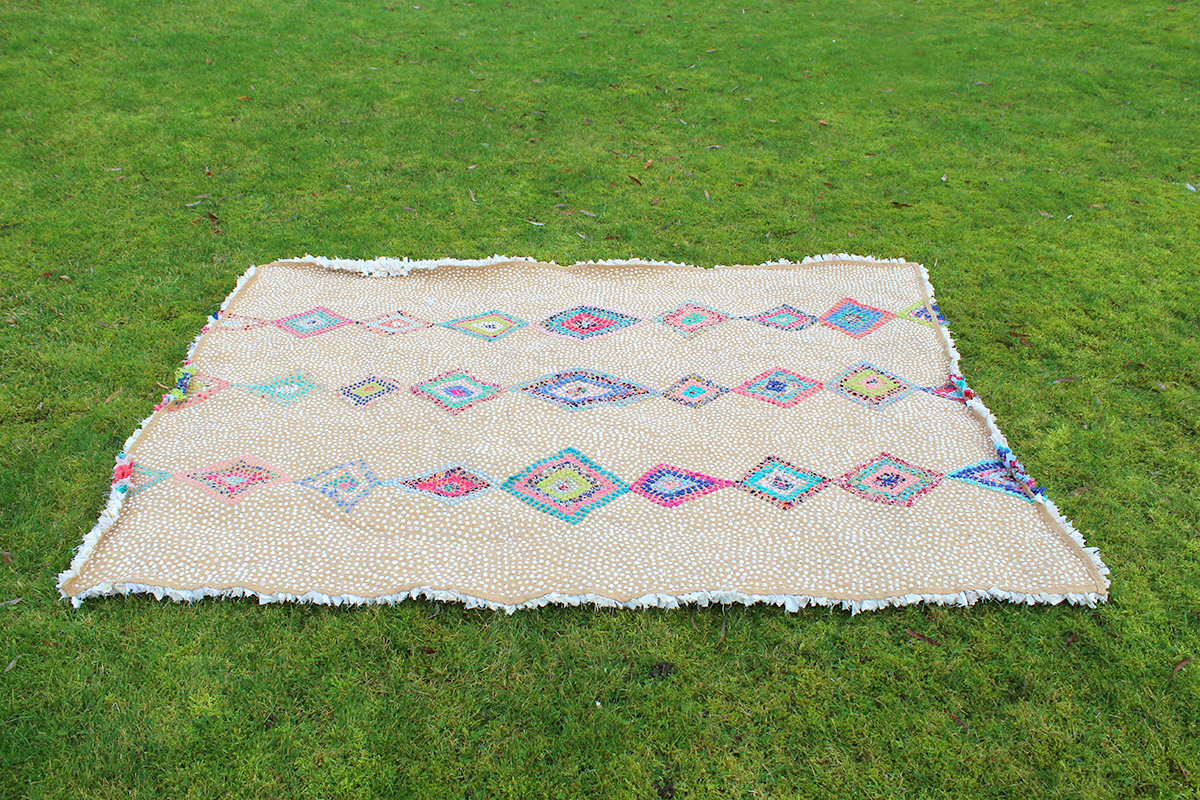
Berber rugs:
Just to get to the bottom of a bit of terminology, Berber rugs are rugs made by the Berber people – an ethnic group indigenous to North Africa. The Berbers have a rich heritage of rug making, which can be traced all the way back to Palaeolithic times when the tribes were mostly nomadic and moved from place to place. In fact, historians believe that one of the reasons that rugs were so important to the Berber people was because they protected communities from the harsh climate of the desert, which involved both snow in the mountains and sandstorms on the plains. Apparently, rugs were even worn as clothing to protect from the elements.
As well as protection, Berber rugs were a form of creative expression for the women making them. Symbolism was woven into the rugs using colour and pattern. Experts can tell where a Berber rug was made just by the the patterns and colours used. For example, the Beni Ourain tribe are famous for their muted colour palettes, with light backgrounds and asymmetrical lines. These rugs contrast starkly with the rugs made by the Azilal tribe, where coloured dyes from the local fauna are a key component.
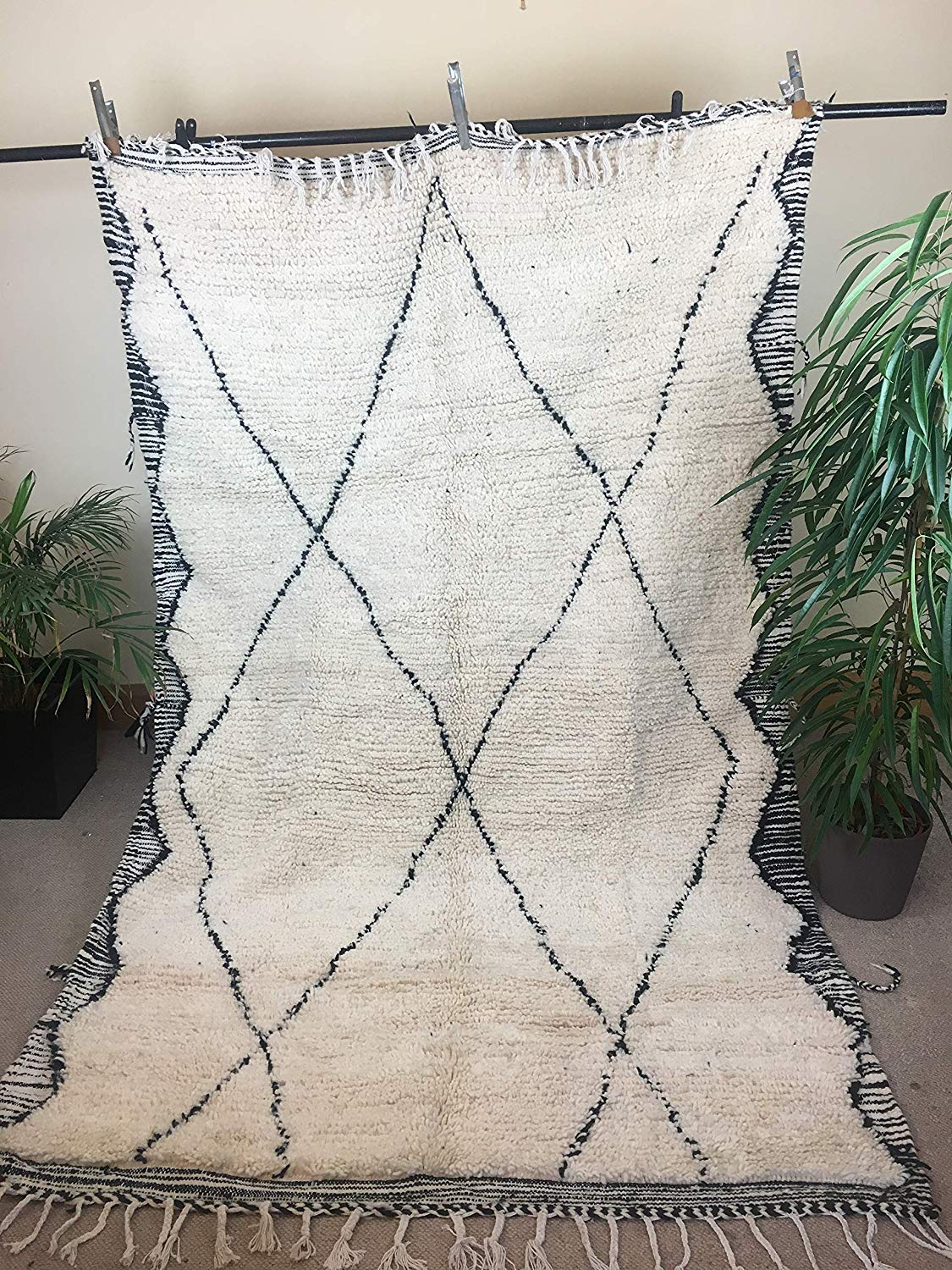
Beni Ourain rug 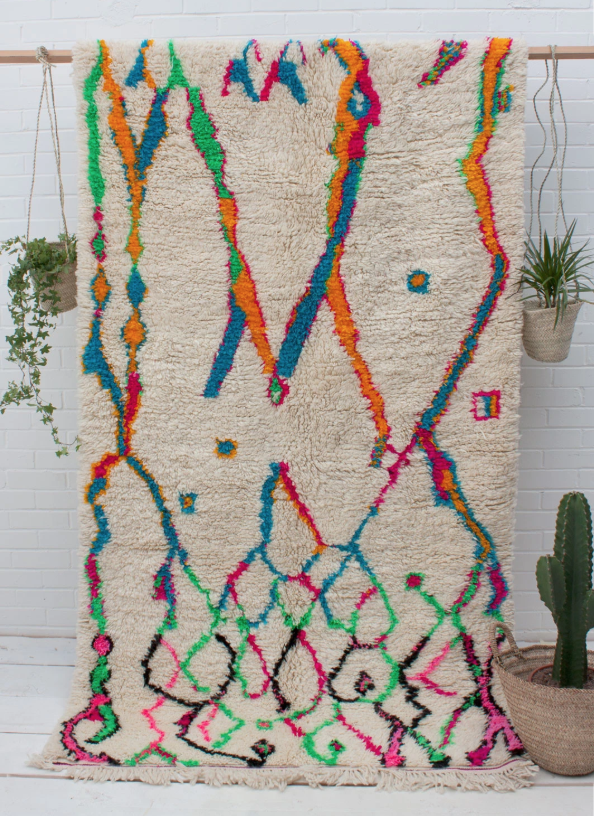
Azlial rug
Both the rugs above have been hand knotted using wool. However, within the Berber rug family is a sub-section called Boucherouite rugs. These are Berber rugs that have been made using scrap materials. Using recycled fabrics and scraps to produce elaborate and sometimes eccentric designs is something that we at Ragged Life are very familiar with, so we thought we’d dive into them a little bit more…
Boucherouite Rugs:
I think we can all agree that the word Boucherouite is a bit of a mouthful, but basically it comes from the Arabic word ‘bu sherwit’, meaning “scrap”. So the name simply describes what is used to make them 🙂
Boucherouite rugs are made using everything from wool and cotton to nylon and plastics. The dye from berries and plants is used to revive even the shoddiest pieces of fabric and transform them into brightly coloured scraps to accent a piece. The treasured skills of weaving and dying have been passed from mother to daughter within the Berber tribes, similar to how British rag rugging skills have been passed down in the UK (although the men are very welcome to get involved here too).
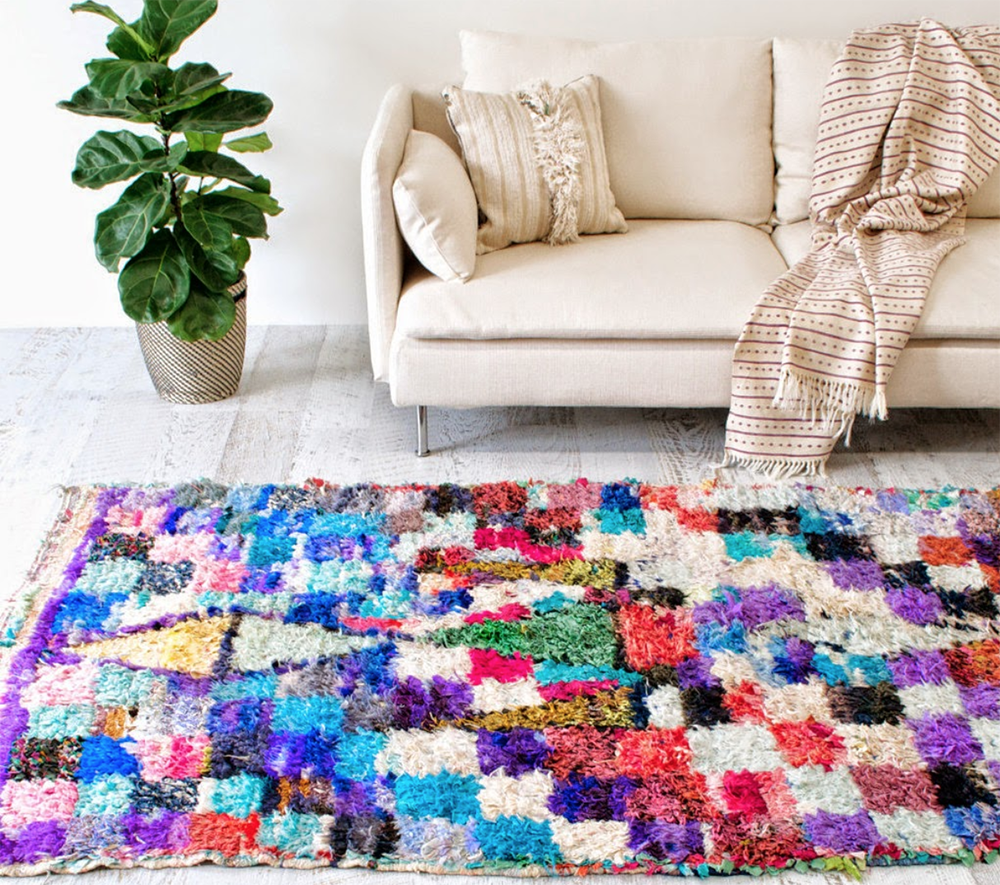
Boucherouite rugs vs British rag rugs:
Although Boucherouite rugs look quite similar to our traditional British shaggy rag rugs and we can emulate the look quite well, Boucherouite rugs are made in a completely different way. Where British rag rugs are made by pushing or pulling rags through a hessian backing (watch our videos on YouTube if you’re unsure how this works), Boucherouite rugs are made by knotting scraps onto the warp threads of a loom like below. It’s a very skilful and time-consuming process that takes years to master.
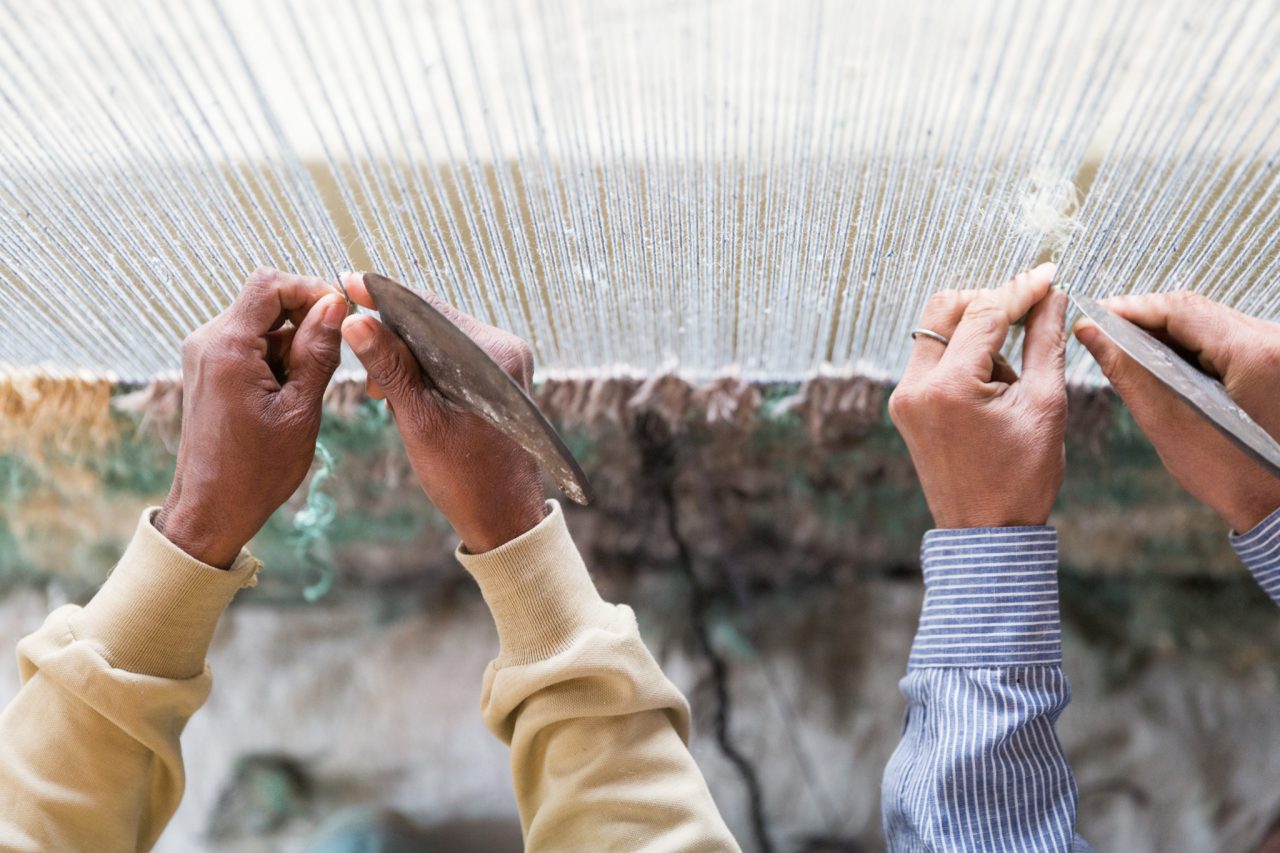
As well as being made differently, Boucherouite rugs tend to be more freestyle in their creation than British rag rugs. Although they are seen as an art form and outlet for creative expression, symmetrical and pictorial designs are few and far between. Both forms of rag rugging are beautiful in their own way though and its these variances that keep life interesting 🙂
Let us know what you think…
So, that was a very basic introduction to Boucherouite rugs. What do you think? Comment below to share your thoughts. Or, if you’d like to see more Boucherouite rug designs then click here to browse more on Pinterest.
And if you’re wondering what to do with all your old scraps and this has inspired you, then why not book yourself a place on one of our workshops. You could make your own Berber-inspired rug! Or join our fortnightly Rag Rug Newsletter here or follow us on Instagram.
Thanks for staying tuned and happy rag rugging!
Elspeth x






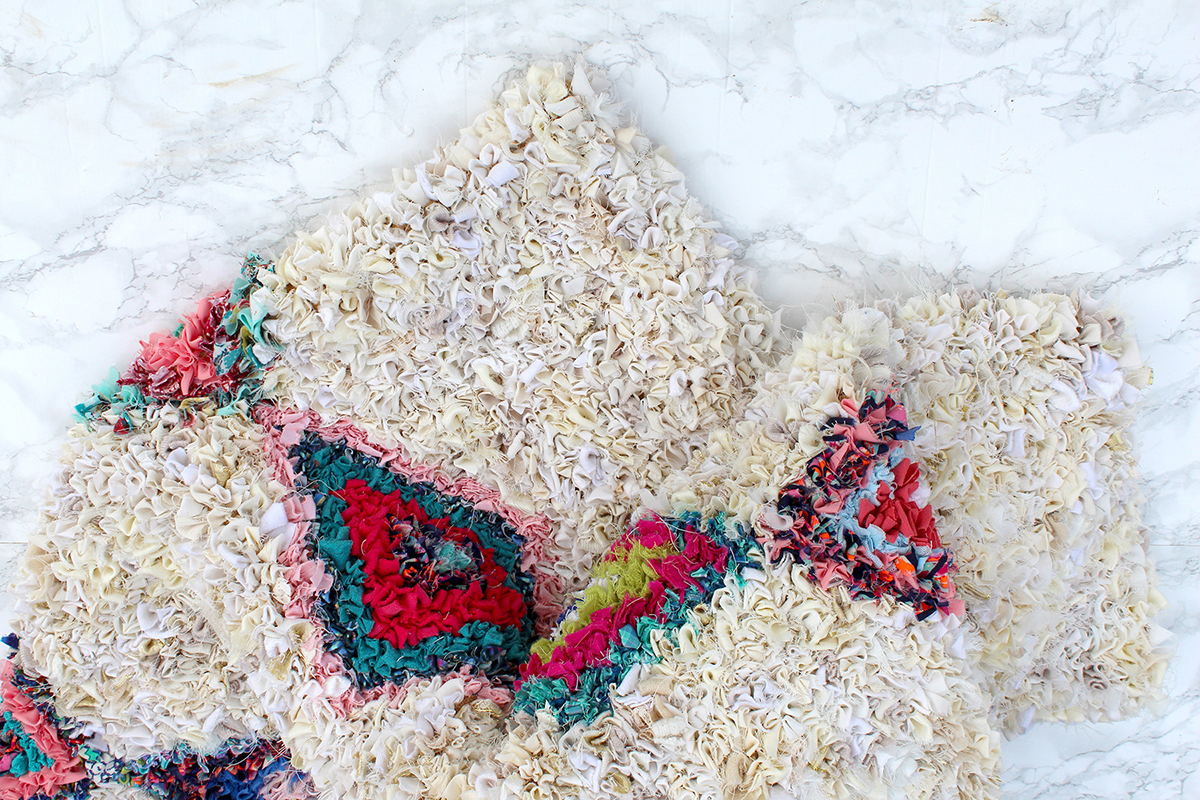



[…] of rag ruggers and textile enthusiasts. So on that note, here is a recent post we wrote on Boucherouite Rugs for a spot of inspiration now and if you’d like fortnightly inspiration sent directly to you, […]
I absolutely love this rug. Where is it going to live? x